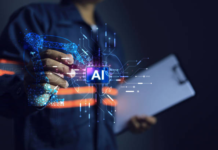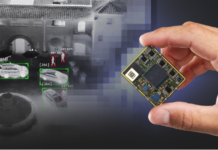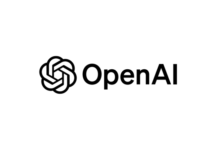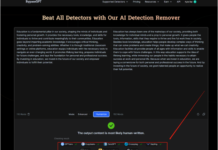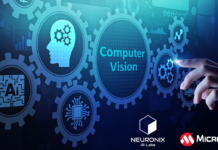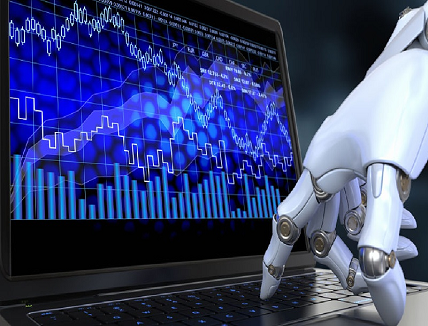
There is no limit to the uses of Ai. Almost every aspect of our life has already been affected. For example, technology allows us to obtain immediate feedback from companies; it reduces the danger of human mistakes and automates most of our everyday tasks; it enhances the images we take on our smartphones; and so on.
Robotics and Machine Learning have a significant impact on the currency market. In other words, FX is a $1.93 quadrillion business. The daily turnover of this market is estimated to be $5.3 trillion, according to recent research. Traders are drawn to it because of its low fees, great liquidity, simplicity of entrance, diversity of trading pairs, and lack of a centralized regulator. A few of the most difficult aspects of trading include the significant degree of volatility and the risk involved in the market’s price-setting mechanism.
Traders depend on AI to reduce the chance of failure. 90 percent of today’s successful forex traders employ trading robots, according to statistics. Their ability to analyze vast volumes of data quickly, assess their performance in real-time, and expedite trading operations is made possible by these revolutionary technologies.
The question of whether is forex trading gambling is subjective. While it involves risk and speculation, forex trading also requires analytical skills and market knowledge. Traders employ strategies, analysis tools, and AI to make informed decisions, distinguishing it from pure chance. The debate does continue, however the evidence overwhelmingly suggests that investments of any kinds require extensive experience and skill in order to succeed.
Machine Learning And Predictive Analysis
Machine learning and predictive analytics are two main advantages of incorporating AI into the currency market.
Predictive analytics makes use of already-existing trade data and algorithms to foretell market movement. Predictive analytics can evaluate vast volumes of data in a fraction of the time and with much fewer errors than humans can. Traders may devote more time to developing data-driven trading strategies by relying on AI technologies to make projections for them. It is also worth mentioning that investors need to know the basics of Forex trading until they start trading with the use of Artificial Intelligence, because even though there are many processess automated, the most important decisions are still made by humas.
An excellent illustration of the use of predictive analytics in the currency market can be seen at Nikkei, a Japanese company. They did this by holding a Dollar-Yen derby every three months, in which participants competed to anticipate the following month’s exchange rates using AI. Various data sources, including publications from the company, trends in the industry, market movements, and commodity prices, were tapped into by the AI program.
Millennials make up over half of all forex traders, according to recent surveys. You already know that because of their upbringing in a technologically advanced society, they are outliers when it comes to technology usage. More than one-third of forex traders use their cell phones to find and compare brokers. In light of these eye-opening findings, it comes as no surprise that an increasing number of foreign exchange (FX) firms are adopting mobile trading platforms.
As the landscape of forex trading continues to evolve, the integration of AI tools has become increasingly significant. These tools not only enhance the trading experience but also provide valuable insights, enabling traders to make more informed decisions. With advancements in AI, traders can now leverage sophisticated sentiment analysis tools to gauge market trends and investor sentiment, a critical aspect of successful forex trading. For a deeper understanding of these innovative tools, check this for more information.
Decreased Risk Of Failure
A common sentiment among forex traders is that if they had access to so much data, they would make better trades and earn more money.
Unfortunately, this isn’t quite as straightforward as it seems to be. It is one of the most common issues traders encounter when it comes to collecting their data and determining which data is most relevant to their business model. However, the most critical problem is that they have no idea how to put the information they get to good use.
Thus, they end up relying on information that is irrelevant or incorrect, which may have a negative impact on their whole trading strategy.
You can do real-time price analysis, identify issues more quickly, and implement fixes virtually immediately after they occur. With the use of Machine Learning, you may get greater insights on the market in real-time and adjust your trading strategy to match the current volatility.
When it comes to forex trading, stop-loss orders have become an essential part of any strategy. When a forex trader uses a stop-loss order, they’re making sure that their loss is kept as little as possible while also selling their security at its greatest possible price. When utilized correctly, this function may be tremendously useful in the often-volatile forex market.
In the future, Forex trading will rely on AI. FX traders profit greatly from artificial intelligence on a wide range of levels. It leverages current statistics and trends to better predict the market by analyzing large volumes of data for you. Forex and CFD firms are encouraged to use innovative technology to provide seamless and engaging user experiences on all devices.
In research performed by JPMorgan in 2020, 60% of all forex deals totaling $10 million were done using algorithms, or forex robots. Automated trading is expected to reach $4 billion by 2024, increasing total volume to $19 billion.
More than 80% of trading activities on US exchanges are completed using various algorithms, and the trend toward more algorithm-aligned trading techniques is strong and expanding.
Investors and traders throughout the globe may benefit from the broad use of AI and machine learning technology and tools by streamlining their trading choices, helping them reach their trading goals more easily, and minimizing their exposure to different risks.



